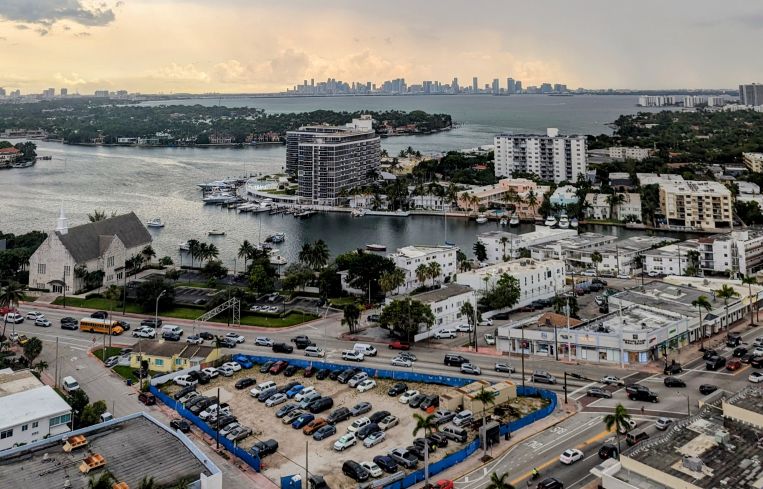Miami CRE Investment Sales Drop 80% From 2022 Peak
By Chava Gourarie May 30, 2023 4:39 pm
reprints
Miami’s once seemingly unstoppable investment sales market appears to have come to a screeching halt, with an 80 percent annual dropoff across all commercial real estate asset types in the first quarter of 2023, according to a report from brokerage Dwntwn Realty Advisors.
The numbers indicate that the rapid rise of interest rates throughout 2022 is hitting Miami just as it is elsewhere, despite the strength of its fundamentals, per the report.
Of course, 2022 was an anomaly for Miami, with the total investment volume across 10 core neighborhoods notching $5.4 billion, not too far from the $6.1 billion invested over the course of the prior three years combined. Similar dynamics are true across other asset classes, especially office and multifamily.
Miami’s office sector saw the greatest dropoff, registering just $6 million in sales in the first quarter of 2023, compared with $226 million in 2022, a 97 percent decrease. But like the market overall, the $911 million in office sales throughout 2022 was vastly higher than the norm.
Similarly, multifamily sales fell 83 percent to $40.6 million in the first quarter, compared with $235 million in 2022. But, when viewed historically, multifamily sales in 2022 exceeded all sales between 2019 and 2021.
Land and retail sales decreased by 77 percent and 65 percent, respectively, while hospitality sales saw the smallest slide, at 29 percent. In fact, hospitality’s best year was in 2021, with $842 million in volume, compared with $368 million in 2022.
While transaction volume declined across the board, pricing was more varied. Most asset classes saw substantial gains between 2019 and 2022, with some fluctuation this year, though the transaction volume in the first quarter was mostly too low to draw any conclusions.
For context, the multifamily price per unit rose 62 percent between 2019 and 2022, while office prices more than doubled over the same period, jumping from $428 per square foot in 2019 to $864 per square foot in 2022. Industrial pricing followed office, rising 84 percent to $704 per square foot; then land, up 77 percent; and retail, up 52 percent to $1,164 per square foot. Only hospitality declined, dropping 24 percent to $344,818 per key.
In the first quarter, multifamily pricing slipped 6 percent to $284,870; office pricing increased 10 percent (though it remained roughly 20 percent below 2019 levels), and retail pricing was cut in half — largely due to a change in Edgewater, where pricing went from a high of $4,047 per square foot in 2021 to $1,483 in 2023.
Some of the variability could be due to the fact that as investment streamed to South Florida, capital flowed into new neighborhoods where pricing had been lower than in neighborhoods traditionally favored by developers. In office, for example, nine of 10 core neighborhoods tracked by the report saw investment in 2022, compared with five in 2019. In hospitality’s peak year of 2021, there were transactions in eight neighborhoods, compared with just three in 2019. (Neighborhoods include Brickell, Downtown, Coconut Grove, Edgewater, MiMo, Little River, Overtown, Wynwood, and North and South Beach.)
In multifamily, Overtown and Brickell saw the greatest change in pricing between 2019 and 2022, with Overtown doubling to $199,094 per unit and Brickell tripling to $390,642, while Wynwood’s office sector saw the most growth, with a whopping 500 percent increase to $2,152 per square foot over that period.
In terms of activity, however, North Beach has by far been the most active both in the first quarter of this year, with 11 of 40 transactions in the 10 core neighborhoods, as well as over the last five years. North beach saw 311 transactions since 2019, followed by Wynwood and South Beach, and then the less developed neighborhoods of Little River, Edgewater and Overtown.
Chava Gourarie can be reached at cgourarie@commercialobserver.com.



